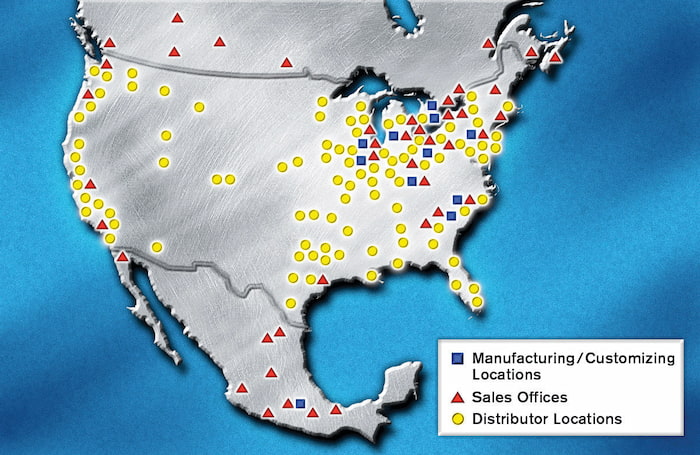A Strategy for 21st Century Tech Leadership
Because the last century was most remarkable for its pitched competitive battles, many business experts now predict that this century will be more distinguished for its cooperative efforts. Here is a progressive model of distribution that takes a collaborative approach to users and suppliers.
Manufacturers haven’t always had the best relationships with the distribution channels that sell their products to end users and to others who apply them in real situations.
In some ways, that’s not surprising: there certainly is creative tension. Manufacturers, on the one hand, always want their channel partners to buy more. Meanwhile, distributors clearly understand that large inventories are expensive to maintain, especially for extensive product lines that have a multitude of options, but relatively few sales of any individual part number. They ask what their manufacturers are doing to help them move products.
There are several important reasons for manufacturers to buck the trend and seek closer relationships with their channel partners.
First, manufacturers of products used across almost every industry cannot reach all of their potential customers without channel assistance. Secondly, most advanced products often need to be customized or engineered to achieve their full potential for providing sustainable competitive advantage. This means distributors have an opportunity to offer tremendous value to the customer. That’s why the first question to distributors is not, “how many sales engineers do you have?” but rather “how many applications engineers do you have?”
As a result, a certain manufacturer may not have as many distributors as some of its competitors. But if it has solid, technically astute distribution partners in that industry sector, those distributors can really become an extension of that manufacturer, an integral part of their family.
I believe this level of cooperation and collaboration is unprecedented in our industry. Progressive manufacturers exchange information with their channel partners that many traditional companies will not even share with their own employees, let alone another business. Some examples include:
- Sharing of confidential information about margins, profits, investments, and plans for the future.
- Access to internal inventory, order entry, order status, and collaboration software.
- Close cooperation in applications engineering.
The last item is of particular importance, since applications engineering expertise can be a core competency that provides a clear advantage in the marketplace. In essence, progressive manufacturers give their distributor partners a share of the brand positioning that they have built for themselves over the past several decades.
The benefit to customers is significant: they get a technically-advanced consultant within driving distance, who can access a world-class product development and manufacturing organization. The result? Solutions with engineering sophistication that are well beyond the reach of most competitors.
With the equivalent of a factory employee around the corner, users get much better customer service. Not only can distributors help analyze the situation, they can provide the products and, in some cases, be there in minutes.
For distributors, the benefits are equally significant: there must be a clear understanding about how both partners add value for the customer. Clearly understood value can enable distributors to increase a manufacturer’s sales even when the industry is in the midst of a rather lackluster recovery.
In the collaboration model, a progressive manufacturer routinely hosts its distributors for tours of the corporate manufacturing and research facilities, even overseas, introducing key distributors to top management. There are regular quarterly meetings for a council of leading distributors to have direct access to company management. These distributors are encouraged to stay in touch with the senior-level executives they meet to continually discuss ideas.
Progressive manufacturers achieve significant sales increases and gain market share as a result of these cooperative efforts. The secret is that they attempt to foster a collaborative relationship with and between distributors. Specifically, they grant the distributors exclusivity in their territories so there are no worries about competing with the manufacturer itself or with another distributor.

A progressive model gives distributors exclusivity in their territories so they don't compete with other distributors.
This depth and degree of collaboration, information sharing, and mutual trust is unique: few traditional manufacturers will provide these assurances to their channels and give them such a clear way to add value to their customers. In fact, some manufacturers still cling to a business model with competitive distribution that creates an almost adversarial relationship with and between distributors, preventing any significant information sharing.
A progressive manufacturer is totally committed to partnerships. Their distributors are partnering with a company that wants to be recognized for its collaborative relationships with distributors, users, and suppliers. It’s who they are.
I believe it’s the best strategy for doing business as a technical leader in the 21st century.
Pumps & Systems, October 2006

